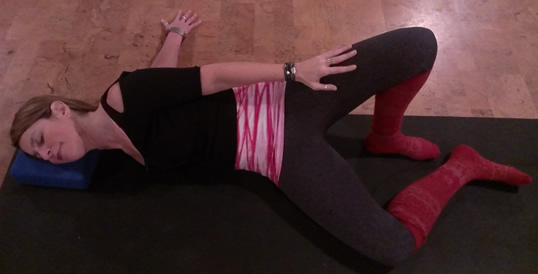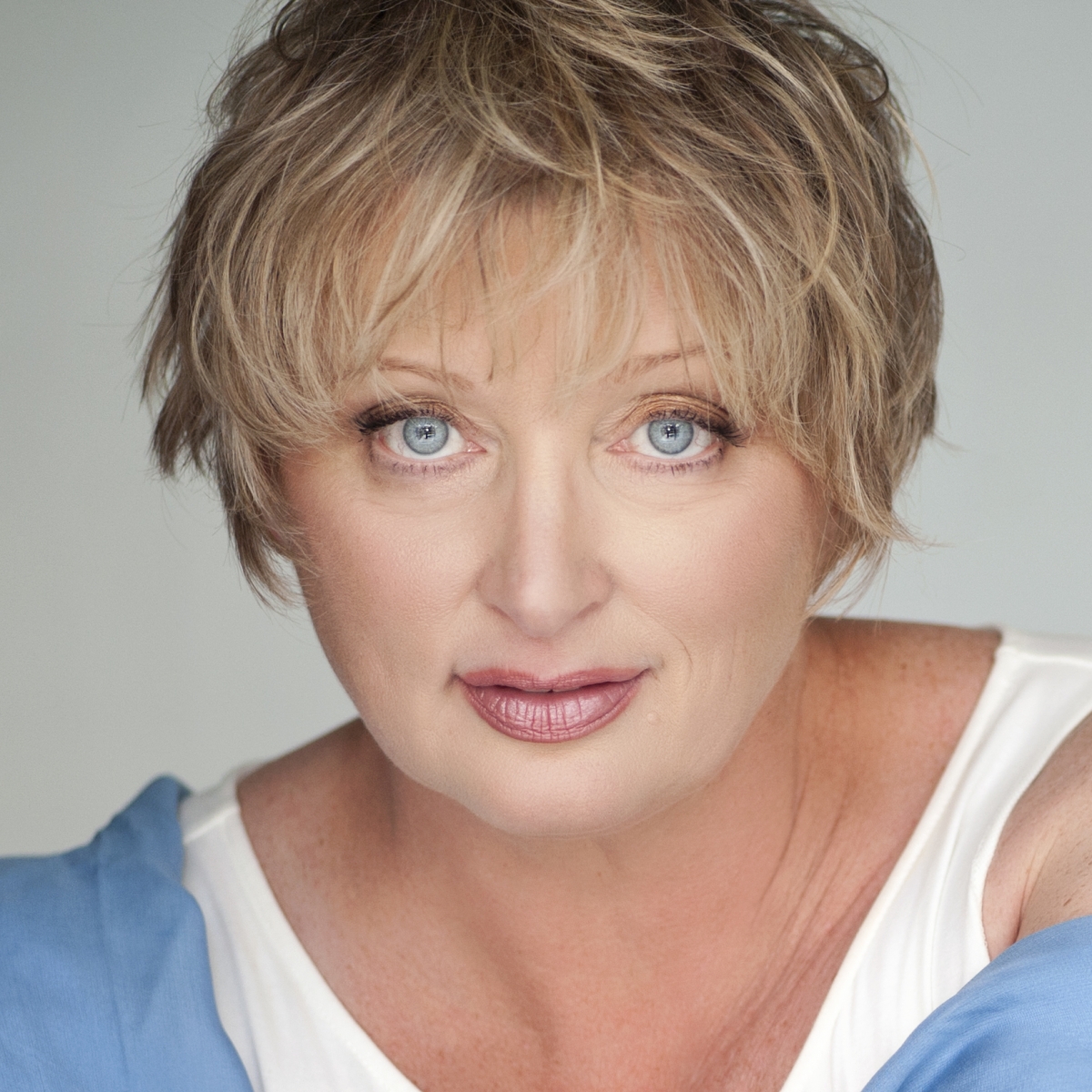Heal Yourself: 3 Tips for Integrating Myofasical Release into Your Yoga Practice

“Once people learn the techniques to release the fascia and accumulated tension, they will see how empowering self-care can be in controlling your own healing processes.” Victoria Haffer, exercise physiologist and yoga teacher trainer.
Begin with two palm-sized massage balls. Two tennis balls will do.
Shove them into a sock until they are snug in the toe, and knot the sock.
Now you’re ready to get deep with myofascial release (MFR)!
All of your muscles, bones, veins, nerves, ligaments and more float in the fascia, a single fibrous spider web that weaves, unbroken, throughout the body.
Think of this interconnected gluey system as a silk scarf. A single snag will send shock waves throughout the fabric. Any kinks in the fascia caused by trauma, scars or emotional tension (issues in the tissues) can be referred throughout your body.
Work out the snags, and you return to balance.
According to Victoria Haffer, a Boston exercise physiologist, wellness coach and trainer of yoga teachers and personal trainers, myofascial release is the most effective and simple therapeutic tool to release chronic pain and stress.
Haffer includes this training in all of her instruction with her clients and students, but emphasizes that anyone, whether athlete, yoga practitioner, or dancer can do MFR on themselves and benefit from integrating it in their practice.
“It’s disempowering to think that you can’t heal yourself. Everyone, not just professionals, should know about the body. This is essential knowledge,” Haffer said at a recent workshop in Fort Myers, FL.
Myofascial release is about applying gentle pressure to a complaining body part. It is a technique that can be done as a massage or with equipment such as a ball or foam roller. Neck pain, back pain, headaches, fibromyalgia, chronic fatigue syndrome, carpal tunnel, TMJ and sciatica are just a few ailments that could be alleviated with a regular MFR practice.
“Once people learn the techniques to release the fascia and accumulated tension, they will see how empowering self-care can be in controlling your own healing processes,” says Haffer. Here are a few myofascial release techniques she recommends, that you can try to integrate in your yoga practice at home. And don’t wait until you have an injury. Consider rolling part of a daily fascial wellness routine.
Myofascial Release Technique #1: Start with a rolling bridge
Lie on your back with your legs bent, soles on the floor. Take your sock with the tennis or massage balls and slip them between your shoulder blades so the balls are on either side of your spine. The balls should not be directly on the spine.
For some, the pressure at this phase may be intense, so staying here would be appropriate. If you are curious to increase the sensation, move into bridge pose, phase two. If you want more intensity, begin to gently shift your weight forward and back so the balls roll along the sides of your spine. Continue for 1 to 2 minutes or until sensation starts to subside.
Be sure to shift the balls so you can roll throughout the thoracic and lumbar spine.

Myofascial Release Technique #2: Tight Psoas
The psoas and the shoulders (see below) are two of the key areas that are tight in most people, and which can benefit greatly from myofascial release. Endless sitting, repetitive movement and poor posture can tighten the psoas making it one of the prime culprits for back pain.
Practice: To access the psoas begin by lying on your stomach. Do not use a tennis ball, but a soft MFR massage ball. Place the ball about one inch to the right of your navel and release your body weight on top of it. Make a pillow with your hands and rest your chin. Breathe deeply as you bend your right leg and slide it up the floor along your right side. Hold and breathe for 1 to 2 minutes.

Myofascial Release Technique #3: Rounded Shoulders
Constant cellphone use, texting and working at computers can round your shoulders and gradually undermine your postural integrity. You can begin to reverse some of the damage by opening the tight muscles of your anterior deltoid, pectorals and the internal rotators of the shoulder with MFR and stretching.
Practice: Lie on your stomach with your arms stretched in a T position, shoulder level. Press your left hand into the floor, and roll onto your right side. Your right arm will be stretched behind you. Have a pillow or bolster under your right cheek. Place your left hand on your side, and hold this stretch for 3 to 5 minutes before switching sides. Be mindful to breathe slow and deep.
Now, open the right inner shoulder. Press a yoga block against a wall shoulder level and slip a ball between you and the block. With your right arm straight behind you, roll the ball from shoulder to center of your chest, keeping the pressure against the ball. Roll for 1 to 2 minutes. Switch sides.
Haffer recommends before beginning any kind of self-care program to first learn basic techniques from an MFR specialist. Also be sure to check with your medical practitioner. For more information about MFR training, visit www.VictoriaHaffer.com and Twitter @BodyMatrixMuse
Also be sure to check out physical therapist Chrys Kub’s course on Yoga for Myofascial Release.
 Nancy B. Loughlin is based in SW Florida. As a writer, she explores yoga, meditation, green living, sustainability and all things funky. As a certified yoga teacher, her practice is dedicated to working with incarcerated children and helping people recover from trauma and PTSD. She’s always interested in applying yogic thinking to wild life experiences including marathons, mountain climbing, and skydiving. Visit her website www.NamasteNancy.com or Twitter @NancyLoughlin.
Nancy B. Loughlin is based in SW Florida. As a writer, she explores yoga, meditation, green living, sustainability and all things funky. As a certified yoga teacher, her practice is dedicated to working with incarcerated children and helping people recover from trauma and PTSD. She’s always interested in applying yogic thinking to wild life experiences including marathons, mountain climbing, and skydiving. Visit her website www.NamasteNancy.com or Twitter @NancyLoughlin.



